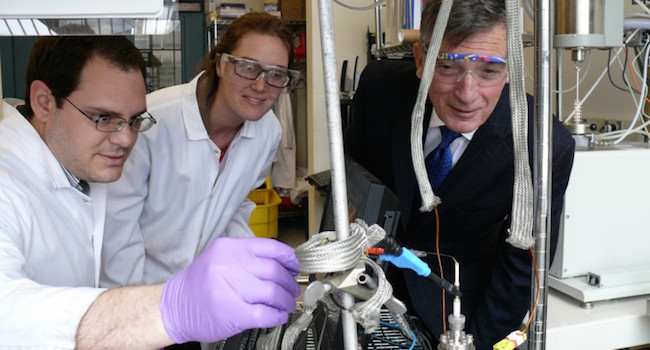A new composition of liquid
batteries could lead to increased capacity and output, making it a
contender for storing renewable energy to power our future.
But first, what is a liquid battery? A liquid battery, or molten salt battery, consists of a salt heated to its melting point, which functions as the salt bridge in conventional batteries. In addition, the electrodes are also molten metals. What this means for the battery is a longer life, higher current output, and faster charging. This is a huge advantage over conventional batteries, but of course there is a major drawback: the temperatures. Salts have extremely high melting points, which is why you don’t have a liquid battery in your phone, or anywhere for that matter. Currently, liquid batteries are mainly used in military applications such as missiles.

Charging and discharging cycle of a liquid metal battery. Note that the chemistry is not entirely the same as this new process, but the concept is the same. Image courtesy of Ambri.

Professor Donald Sadoway in his lab. He was the original creator of such technology and now has further improved it. Image courtesy of Donald Sadoway
While this battery technology will almost certainly not be inside of your laptop, phone, or car in the coming years, you may be able to power your house with a liquid battery. With the fast charging times and high power output, this could be the best thing that has ever happened to renewable energy as we may finally have a battery that can store enough energy, and not need to be maintained very often. The issue with heating to rather high temperatures is still an immediate concern, but with further advancements, or simply leaving the batteries in an industrial setting away from the individual, large strides can be made to bring the benefits of liquid batteries to your doorstep.
Want to learn straight from the man himself? Go watch Professor Sadoway's Ted Talk below.






No comments:
Post a Comment